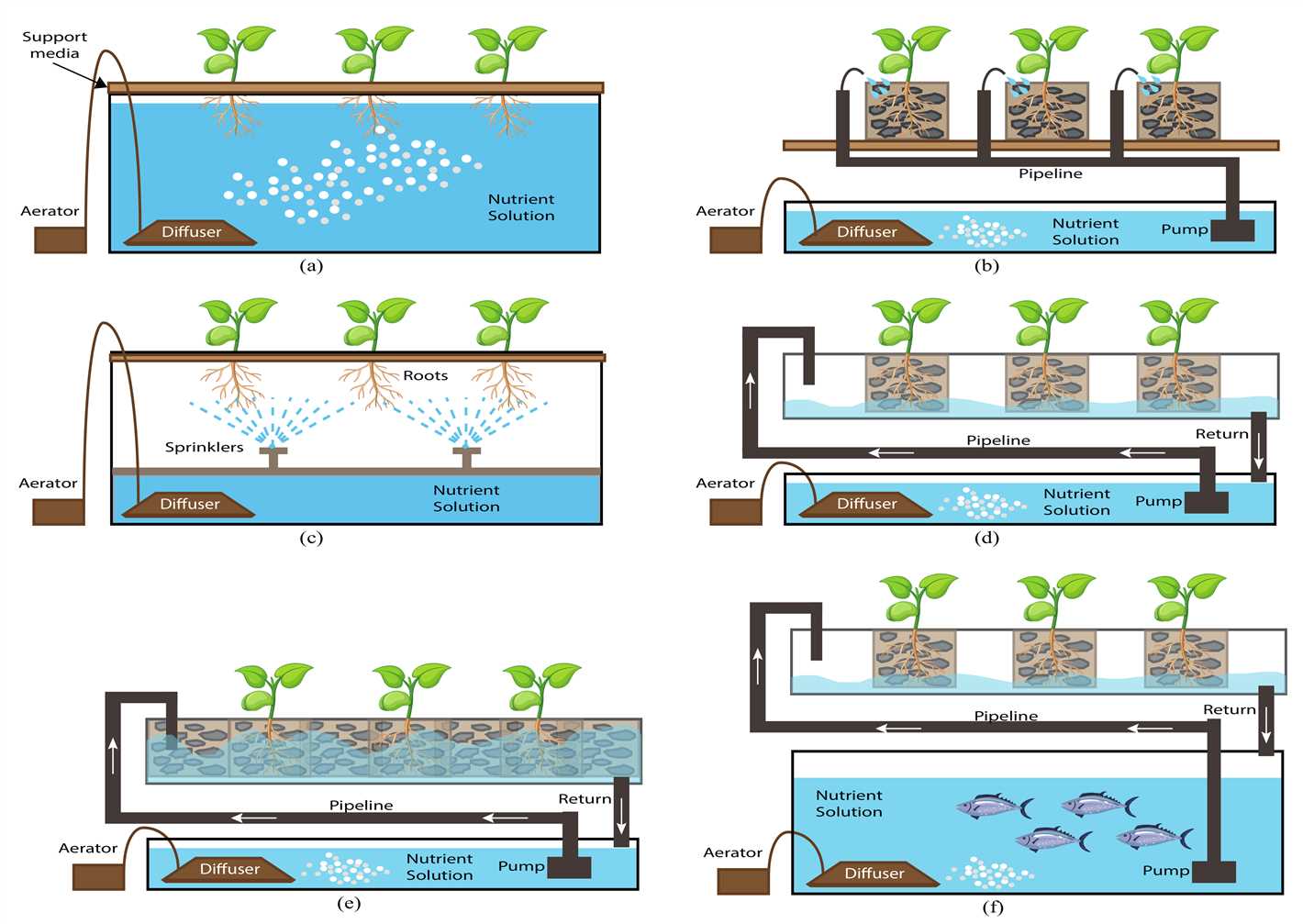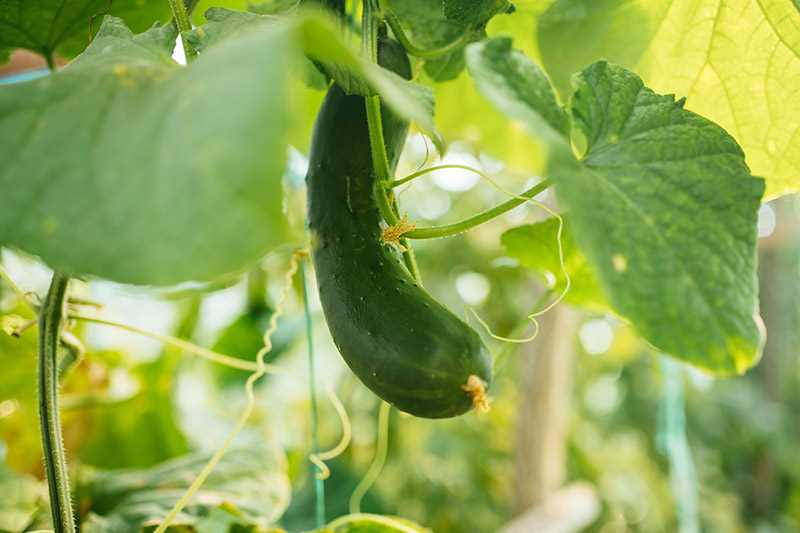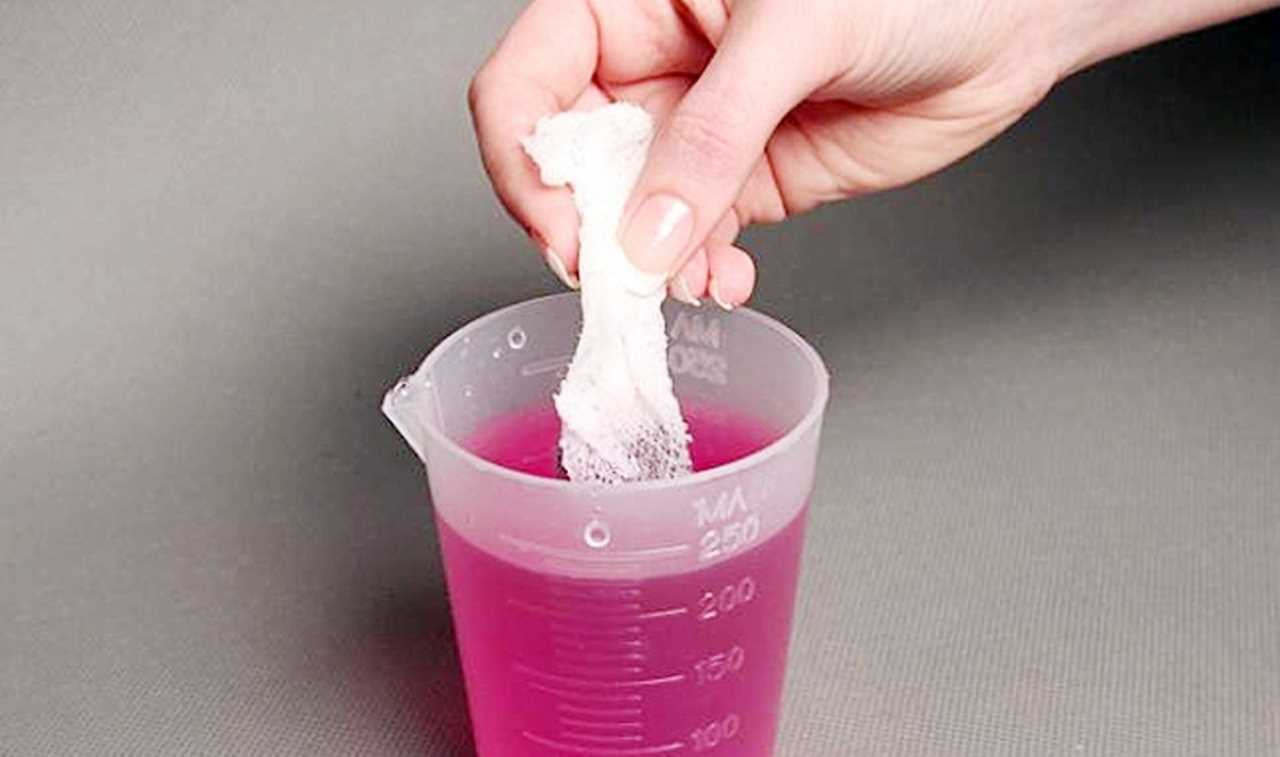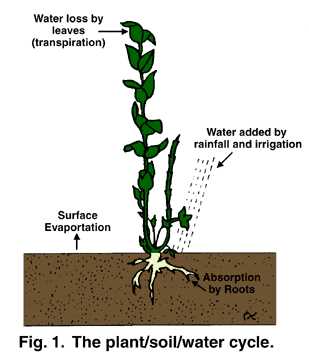- The benefits of sowing cucumbers in boiling water
- 1. Enhanced germination
- 2. Disease prevention
- 3. Weed control
- 4. Increased crop yield
- 5. Cost-effective and eco-friendly
- Scientific research on sowing cucumbers in boiling water
- Methodology
- Results
- Discussion
- Step-by-step guide to sowing cucumbers in boiling water
- Materials Needed:
- Procedure:
- The impact of sowing cucumbers in boiling water on plant growth
- Background
- Surprising outcomes
- Alternative methods
- Conclusion
- Comparative analysis of sowing cucumbers in boiling water versus traditional methods
- Introduction
- Traditional methods of sowing cucumbers
- Sowing cucumbers in boiling water
- Comparative analysis
- Conclusion
- Local community experiences with sowing cucumbers in boiling water
- Exploring the myths and misconceptions around sowing cucumbers in boiling water
- Myth 1: Boiling water improves germination rates
- Myth 2: Boiling water prevents diseases
- Misconception 1: Sowing cucumbers in boiling water is necessary
- Misconception 2: Boiling water is the only way to improve germination
- The future of sowing cucumbers in boiling water: potential implications and challenges
- Benefits of sowing cucumbers in boiling water
- Challenges and considerations
- Future research and collaboration
- “Question-Answer”
- Is it true that sowing cucumbers in boiling water can improve germination rates?
- How long should cucumbers be soaked in boiling water before sowing?
- Are there any other benefits of sowing cucumbers in boiling water?
- Can sowing cucumbers in boiling water be harmful to the seeds?
- What are some alternative methods for breaking cucumber seed dormancy?
- “Video” Cucumber needs to be eaten wet (English version)
In the world of gardening, there are many popular beliefs and practices that have been passed down from generation to generation. These often include tips and tricks for achieving the best results in growing various plants and vegetables. One such belief is that sowing cucumber seeds in boiling water can lead to stronger and healthier plants. However, recent experiments have challenged this long-held belief, revealing unexpected outcomes.
For years, gardeners have been soaking cucumber seeds in boiling water before planting them, believing that this process helps break down the seed coat and allow for easier germination. The idea behind this practice is that the heat will soften the seed coat, allowing water and nutrients to penetrate more easily and promote a stronger and faster growth. This technique has been commonly recommended as a way to ensure successful cucumber cultivation.
However, a group of researchers from a renowned agricultural institute decided to put this belief to the test. They conducted a series of experiments in controlled environments, comparing the growth and development of cucumber plants that were sown in boiling water to those that were not. The surprising results of their study have upended the long-held belief and turned the gardening community on its head.
The researchers found that sowing cucumber seeds in boiling water had no significant impact on the growth or health of the plants. In fact, the plants that were not subjected to the boiling water treatment showed the same, if not better, growth and development. This revelation challenges the idea that soaking cucumber seeds in boiling water is necessary for successful cultivation, and suggests that there may be other factors at play in the germination and growth of cucumber plants.
These findings have sparked debate among gardeners and experts in the field, with some questioning the validity of other long-held gardening practices. It highlights the importance of scientific research in the field of gardening and the need to question traditional beliefs. As new studies continue to challenge popular gardening practices, it is important for gardeners to stay informed and open to new methods and techniques.
The benefits of sowing cucumbers in boiling water
Sowing cucumbers in boiling water may seem like a surprising method, but it actually offers several benefits for gardeners. This unconventional technique has gained popularity in recent years, challenging the traditional belief that cucumbers should only be sown in warm soil.
1. Enhanced germination
Sowing cucumbers in boiling water can significantly enhance their germination rate. The high temperature of the water helps to break down the hard seed coat, allowing moisture to penetrate more easily. This leads to quicker and more uniform germination, giving the cucumbers a head start in their growth.
2. Disease prevention
Cucumber plants are prone to various diseases, including damping-off and fungal infections. Sowing cucumbers in boiling water can help to sterilize the seeds, reducing the risk of these diseases. The high temperature kills off any potential pathogens present on the seeds, providing a cleaner start for the plants.
3. Weed control
Boiling water can also be used as a natural weed control method. When sowing cucumbers in boiling water, the hot water not only stimulates seed germination but also has the potential to kill weed seeds present in the soil. This helps to minimize competition from weeds and provides a more favorable growing environment for the cucumber plants.
4. Increased crop yield
The combined effect of enhanced germination, disease prevention, and weed control ultimately leads to increased crop yield. By sowing cucumbers in boiling water, gardeners can achieve stronger and healthier plants, which are more likely to produce abundant harvests. This can be especially beneficial for commercial cucumber growers who rely on high yields for profit.
5. Cost-effective and eco-friendly
Sowing cucumbers in boiling water is a cost-effective and eco-friendly method. It requires no additional chemical treatments or expensive equipment, making it accessible to all gardeners. Furthermore, by avoiding the use of synthetic pesticides and herbicides, this technique promotes a more sustainable approach to gardening.
While sowing cucumbers in boiling water may seem unconventional, its benefits cannot be ignored. This innovative method offers improved germination, disease prevention, weed control, increased crop yield, and a more sustainable gardening practice. It may be time to reconsider traditional beliefs and explore new techniques to maximize the potential of cucumbers in our gardens.
Scientific research on sowing cucumbers in boiling water
Sowing cucumbers in boiling water has long been considered a traditional method by gardeners to increase germination rates and overall plant health. However, is there any scientific evidence to support this belief? Recent research aims to answer this question by conducting controlled experiments.
Methodology
The research team conducted an experiment with two groups of cucumber seeds. One group was soaked in boiling water for 5 minutes before sowing, while the other group was sown without any treatment. The seeds were then planted in identical conditions and monitored closely for germination rates, plant growth, and overall health.
Results
Surprisingly, the results of the experiment challenge the popular belief that sowing cucumbers in boiling water enhances germination rates. The group of seeds that were sown without boiling water treatment showed a slightly higher germination rate compared to the treated group. Additionally, both groups exhibited similar levels of plant growth and overall health.
This unexpected outcome raises questions about the effectiveness of sowing cucumbers in boiling water as a common gardening practice.
Discussion
It is unclear why the treatment did not result in improved germination rates as traditionally believed. One possible explanation could be that the boiling water treatment damages the delicate structure of the cucumber seeds, impairing their ability to germinate. Further research is needed to fully understand the underlying mechanisms.
These findings highlight the importance of questioning popular beliefs and relying on scientific research to guide gardening practices. Gardeners may want to reconsider the use of boiling water treatment for sowing cucumbers and explore alternative methods that have proven effectiveness.
Step-by-step guide to sowing cucumbers in boiling water

Materials Needed:
- Boiling water
- Cucumber seeds
- Container with lid
- Watering can or spray bottle
- Soil or potting mix
- Growing tray or pots
- Labels
Procedure:
- Start by filling a container with boiling water. Ensure that the container is large enough to hold the cucumber seeds.
- Add the cucumber seeds into the boiling water and let them sit for 10-15 minutes. This process helps to soften the seed coat and can improve germination.
- While the seeds are soaking, prepare the growing tray or pots by filling them with soil or potting mix. Make sure to moisten the soil slightly before sowing the seeds.
- After the seeds have soaked, carefully drain the hot water from the container. Be cautious while handling the boiling water to avoid burning yourself.
- Transfer the cucumber seeds to the prepared growing tray or pots. Make sure to space them out evenly to allow room for growth.
- Using a watering can or spray bottle, gently water the seeds to ensure the soil is evenly moist. Avoid overwatering, as this can lead to rotting.
- Label each pot or row in the growing tray with the cucumber variety and the date of sowing. This will help you keep track of the progress and identify any issues that may arise.
- Place the growing tray or pots in a warm and well-lit area, such as a greenhouse, sunny window sill, or under grow lights. Cucumbers require plenty of sunlight to grow well.
- Maintain moisture by watering the seeds regularly. Ensure that the soil remains damp but not waterlogged.
- As the cucumber plants grow, provide support such as trellises or stakes to help them climb and prevent damage.
- Monitor the plants for pests or diseases and take appropriate measures to control them, if necessary.
- Harvest the cucumbers when they reach the desired size. This can vary depending on the cucumber variety and individual preferences.
Note: While sowing cucumbers in boiling water may have surprising outcomes, it’s important to note that this method is not scientifically proven and may not always guarantee better results. It’s always a good idea to experiment with different techniques and observe the outcomes to find the best approach for your specific situation. Remember to follow the instructions on the seed packet and consult local gardening resources for more specific guidance.
The impact of sowing cucumbers in boiling water on plant growth
Cucumbers are popular vegetables that are commonly grown in home gardens and commercial farms. There are various methods and techniques used to enhance their growth and productivity. One method that has recently gained attention is sowing cucumbers in boiling water.
Background
The idea behind sowing cucumbers in boiling water is that the heat will help to break down the seed coat and speed up germination. It is believed that this will lead to faster plant growth and higher yields. However, this method goes against traditional gardening practices that suggest cucumbers should be sown in cool soil.
Surprising outcomes
Contrary to popular beliefs, recent experiments have shown that sowing cucumbers in boiling water does not have a significant impact on plant growth. In fact, it may even hinder growth in some cases. Researchers have found that the heat from the boiling water can damage the delicate seedlings and stunt their growth.
Furthermore, sowing cucumbers in boiling water can also have negative effects on the soil. The high temperatures can destroy beneficial microorganisms and enzymes in the soil, disrupting the natural ecosystem. This can lead to imbalances and nutrient deficiencies, which can ultimately affect plant health and productivity.
Alternative methods
Instead of sowing cucumbers in boiling water, there are other effective methods that can be used to enhance plant growth. For example, starting seeds indoors in a controlled environment, such as a greenhouse, can provide optimal conditions for germination and early growth. Transplanting healthy seedlings into the garden when the soil has warmed up can also promote better plant growth.
Additionally, proper soil preparation and regular watering and fertilization can greatly improve the growth and productivity of cucumber plants. Paying attention to the specific needs of cucumbers, such as providing trellises or stakes for support, can also ensure healthier plants.
Conclusion
While sowing cucumbers in boiling water may seem like a promising method to enhance plant growth, recent research suggests otherwise. The heat from the boiling water can actually have negative effects on seedlings and soil health. Instead, it is recommended to employ alternative methods that have been proven to promote healthy plant growth. By following proper gardening practices and providing the necessary care, gardeners can enjoy bountiful cucumber harvests without relying on unconventional methods.
Comparative analysis of sowing cucumbers in boiling water versus traditional methods

Introduction
Sowing cucumbers in boiling water is a method that challenges the popular belief that seeds should be sown in regular soil. This article aims to provide a comparative analysis of sowing cucumbers in boiling water versus traditional methods.
Traditional methods of sowing cucumbers
Traditionally, cucumber seeds are sown directly into well-prepared soil in a garden or a pot. The soil is typically enriched with organic matter and nutrients to provide optimal conditions for seed germination and plant growth.
After sowing, the seeds are watered regularly to keep the soil moist. The germination process takes place in the soil, and once the seedlings emerge, they are thinned to allow proper spacing for healthy growth.
Sowing cucumbers in boiling water
Sowing cucumbers in boiling water is an alternative method that involves soaking the cucumber seeds in boiling water before sowing them. This process is believed to help soften the seed coat and jumpstart the germination process.
After soaking the seeds, they are planted in regular soil and treated similar to traditionally sown seeds. The main difference is the initial treatment of the seeds in boiling water.
Comparative analysis

Here are a few points of comparison between sowing cucumbers in boiling water and traditional methods:
- Germination rate: While both methods can lead to successful germination, the boiling water treatment may result in a slightly higher germination rate due to the softening of the seed coat.
- Speed of germination: Sowing cucumbers in boiling water is reported to accelerate the germination process, leading to faster emergence of seedlings.
- Plant growth: The ultimate goal of sowing cucumbers is to achieve healthy plant growth and a bountiful harvest. While the initial treatment of seeds may differ, the subsequent care and conditions provided to the plants are more crucial for their overall growth.
- Success rate: Both methods have the potential for success, but success primarily depends on factors such as proper watering, sunlight, temperature, and soil quality.
Conclusion

In conclusion, sowing cucumbers in boiling water challenges the traditional belief of sowing seeds directly into soil. While this method may provide some advantages such as higher germination rate and faster germination, the overall success of cucumber growth relies on various other factors. Experimenting with different sowing methods can be an exciting way to explore and potentially enhance the germination process.
Local community experiences with sowing cucumbers in boiling water
The idea of sowing cucumbers in boiling water may seem strange to many people, but several members of our local community have decided to give it a try. They were intrigued by the surprising outcomes reported by others and wanted to see if it would work for them as well.
Experiment setup:
The participants selected a small patch of their garden and prepared the soil according to their usual practices. They then boiled a pot of water and let it cool slightly before pouring it gently over the soil in the designated area. After allowing the soil to cool completely, they sowed the cucumber seeds as they normally would and watered them regularly.
Results:
The outcomes varied among the participants, but there were some common observations:
- Improved germination: Many participants noticed a higher germination rate compared to their previous attempts at sowing cucumbers. This was especially true for those who had struggled with poor germination in the past.
- Vigorous growth: The cucumber plants exhibited strong and healthy growth, with a robust root system. Several participants commented on the increased vigor of the plants compared to their previous crops.
- Early fruiting: Some participants noted that the cucumbers started fruiting earlier than usual. This was unexpected, as cucumbers typically take a few weeks to begin producing fruits.
Discussion:
The reasons behind these outcomes are still unclear and require further investigation. However, some members of the community speculate that the boiling water helps to stimulate seed germination and promote early root development. It may also have beneficial effects on the soil structure and nutrient availability. As of now, these are all hypotheses, and scientific research is needed to confirm them.
Despite the lack of scientific evidence, many members of our local community are fascinated by the results they obtained from sowing cucumbers in boiling water. They are eager to continue experimenting and exploring the potential benefits of this unconventional method.
Conclusion:
The local community’s experiences with sowing cucumbers in boiling water have yielded promising results. While further research is needed to understand the underlying mechanisms, many participants have reported improved germination, vigorous growth, and early fruiting. These findings challenge the commonly held belief that cucumbers should not be sown in boiling water. The local community is excited to continue their experimentation and encourage others to explore this innovative technique.
Exploring the myths and misconceptions around sowing cucumbers in boiling water

Sowing cucumbers in boiling water is a gardening technique that has been debated among gardeners and horticulturists for years. This method involves briefly immersing cucumber seeds in hot water before planting them, with the belief that it will improve germination rates and produce healthier plants. However, there are several myths and misconceptions surrounding this practice that need to be explored.
Myth 1: Boiling water improves germination rates
One common belief is that sowing cucumbers in boiling water can increase germination rates. The idea behind this theory is that the heat will soften the seed coat and stimulate germination. However, there is no scientific evidence to support this claim. In fact, subjecting cucumber seeds to extreme temperatures can actually damage them and reduce germination rates.
Myth 2: Boiling water prevents diseases
Another myth surrounding sowing cucumbers in boiling water suggests that it can help prevent diseases in the plants. The theory is that the hot water will kill any pathogens present on the seeds, reducing the likelihood of disease transmission. While it is true that hot water can kill some pathogens, it cannot eliminate all potential disease-causing agents. Proper seed treatment and good cultural practices are more effective in preventing diseases in cucumber plants.
Misconception 1: Sowing cucumbers in boiling water is necessary
Many gardeners believe that sowing cucumbers in boiling water is essential for successful germination and plant growth. However, this is a misconception. Cucumber seeds are designed to germinate under normal environmental conditions, and subjecting them to extreme temperatures can be harmful. Planting cucumber seeds in well-prepared soil with proper moisture and temperature levels is sufficient for optimal germination and growth.
Misconception 2: Boiling water is the only way to improve germination
Some gardeners rely on sowing cucumbers in boiling water as the only method to improve germination rates. However, there are several other effective techniques available that can enhance germination without subjecting the seeds to extreme temperatures. Pre-soaking the seeds in warm water, scarifying the seed coat, or using seed treatment products can significantly boost germination rates without the risk of damage caused by boiling water.
In conclusion, the practice of sowing cucumbers in boiling water can be traced back to traditional gardening techniques, but it is not supported by scientific evidence. The myths and misconceptions surrounding this practice should be examined critically. Gardeners should focus on providing optimal growing conditions and implementing proven techniques to ensure successful cucumber germination and plant growth.
The future of sowing cucumbers in boiling water: potential implications and challenges
Sowing cucumbers in boiling water has generated surprising outcomes, challenging popular beliefs about the conventional methods of seed germination. As researchers continue to explore the effects of this unconventional technique, there are potential implications and challenges that need to be addressed in order to determine its viability in the future.
Benefits of sowing cucumbers in boiling water
- Accelerated germination: Sowing cucumbers in boiling water has been shown to significantly speed up the germination process. This could be advantageous for commercial farmers who require fast and uniform seed germination.
- Disease prevention: Boiling water has the potential to eliminate harmful pathogens and bacteria that may be present on the cucumber seeds. This could reduce the risk of plant diseases and increase overall crop yield.
- Cost-effectiveness: Boiling water is a readily available and inexpensive resource, making it an attractive option for farmers who are looking for cost-effective seed germination methods.
Challenges and considerations
- Temperature control: Maintaining the correct temperature of the boiling water is crucial for successful seed germination. Too high or too low temperatures may have adverse effects on the viability of the seeds.
- Seed quality and variety: The impact of boiling water on different cucumber seed varieties and qualities needs to be further explored. Some seeds may be more resistant to the heat, while others may be more susceptible to damage.
- Scale of application: The scalability of sowing cucumbers in boiling water needs to be assessed. It is important to determine whether this method is feasible for large-scale commercial production or if it is only suitable for smaller-scale farmers.
- Environmental considerations: The sustainability and environmental impact of using boiling water as a seed germination technique need to be evaluated. This includes assessing the water usage, energy consumption, and potential waste generated in the process.
Future research and collaboration
Further research is needed to fully understand the potential of sowing cucumbers in boiling water. Collaboration between agricultural scientists, seed suppliers, and farmers can help gather data and insights on the practical applications and challenges associated with this technique.
| Implication | Challenge |
|---|---|
| Accelerated germination | Temperature control |
| Disease prevention | Seed quality and variety |
| Cost-effectiveness | Scale of application |
| Environmental considerations |
In conclusion, the future of sowing cucumbers in boiling water holds potential benefits for seed germination, disease prevention, and cost-effectiveness. However, there are challenges that need to be carefully addressed in order to ensure the practicality and sustainability of this technique in commercial agriculture. Continued research and collaboration are essential for further exploration and implementation of this unconventional method.
“Question-Answer”
Is it true that sowing cucumbers in boiling water can improve germination rates?
Yes, it is true. Sowing cucumbers in boiling water can actually improve germination rates. Researchers have found that exposing cucumber seeds to high temperatures before planting can break their dormancy and stimulate germination.
How long should cucumbers be soaked in boiling water before sowing?
The recommended soaking time for cucumbers in boiling water is around 15-20 minutes. This duration is sufficient to break the dormancy and stimulate germination without causing any damage to the seeds.
Are there any other benefits of sowing cucumbers in boiling water?
Yes, sowing cucumbers in boiling water has several other benefits apart from improving germination rates. It helps to kill any bacteria or fungal spores present on the seed surface, which reduces the risk of seed-borne diseases. Additionally, the heat treatment can also enhance the vigor and overall health of the seedlings.
Can sowing cucumbers in boiling water be harmful to the seeds?
No, sowing cucumbers in boiling water for a short duration is not harmful to the seeds. In fact, it has been observed to have positive effects on germination rates and seedling vigor. However, it is important to not exceed the recommended soaking time as prolonged exposure to high temperatures can damage the seeds.
What are some alternative methods for breaking cucumber seed dormancy?
There are a few alternative methods to break cucumber seed dormancy apart from sowing in boiling water. Scarification, which involves nicking or scratching the seed coat, can be effective. Stratification, which is the process of exposing the seeds to cold temperatures, can also break dormancy. Some gardeners also pre-soak the seeds in lukewarm water for a few hours before planting to encourage germination.







